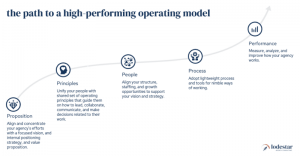 Image courtesy of The Mirror
Image courtesy of The Mirror
It may seem somewhat obvious to say on the surface, but your human capital, employees, are likely your biggest asset. Your business success or failure likely hinges on keeping your employees effective, dedicated, and well trained. Yet, too many businesses treat employees as replaceable cogs in a massive wheel; failing to adequately value and promote the work done on their behalf to promote the business. Today, we’ll discuss ways to improve staff productivity and future proof your business by optimizing their skills as the world changes what you need from them.
The cost of losing staff
In the days after WWII, lifelong employment seemed the norm. You started with a company as a young man or woman (in those days, more likely a man) and worked for the same company throughout your working life. My grandfather, typical of that generation, worked for US Steel almost from the time he immigrated to the US until he retired. You got your watch and pension, then, likely, died a few years later.
However, today’s young folks find advantages in job-hopping. According to the US Department of Labor Statistics, the average worker today can expect to hold 11+ jobs throughout their career, with 27% of the workforce changing jobs every year. Such turnover is expensive for a company. Not only do you incur the cost of hiring and training new employees to replace those lost to attrition but there’s a learning curve before new staff gain the skill necessary to produce the level of work produced by workers who moved on.
You also lose institutional knowledge when workers move on to new positions, creating costly repeat mistakes and failures to recognize patterns leading to suboptimal decisions.
Yet, if you fail to properly manage staff, to motivate them toward higher performance, and build an infrastructure that encourages retention, you incur the turnover costs.
Retaining employees
Retaining employees, thus, has tangible value to the organization, as you can see in the examples below.
A recent CAP study found average costs to replace an employee are:
- 16% of annual salary for high-turnover, low-paying jobs (earning under $ 30,000 a year). For example, the cost to replace a $ 10/hour retail employee is $ 3,328.
- 20% of annual salary for midrange positions (earning $ 30,000 to $ 50,000 a year). For example, the cost to replace a $ 40k manager is $ 8,000.
- Up to 213% of annual salary for highly-educated executive positions. For example, the cost to replace a $ 100k CEO is $ 213,000.
Moreover, an organization most likely loses its best employees, since these individuals have the greatest opportunity to improve their condition by switching to a different company. That leaves only your less valuable employees and less competent new hires, driving operational costs up and performance down, often resulting in lower customer satisfaction. Not a good combination and a particular challenge in small businesses, where turnover also damages the morale of the remaining employees.
Improve staff productivity
Interestingly, the same factors that work to retain workers, also help improve staff productivity, providing a double bonus for organizations. Today, we discuss 3 strategies for improving your staff; creating value for both employees and the organization.
Regular performance reviews
Most firms use regular performance reviews for a reason – they work. This means that taking some time out and figuring just how to measure productivity is important. Do you measure staff performance by how well they sell products? By their relationship to clients? By how well they meet their deadlines? Or perhaps could it be how well they report issues, or kept their integrity, or helped train new staff members?
In generating performance reviews, ensure you measure activities under the control of the employee, hence don’t assess department revenue unless the employee directly impacts department revenue, such as the assigned supervisor. You only create conflict if employees are lumped together and judged by the performance of a group they don’t control.
And, remember that employees do what you motivate them to do. Hence, if you use cost control as a measure of performance, recognize the tendency of employees to put off regular maintenance to reduce costs. These decisions are costly in the long run.
Act by example
Employees take their cue from your behavior. If you commonly show up late, lounge around your office, and take 2-hour lunches, your employees won’t work very hard. You set the example of your firm, and if you hope for others to follow it, you must ensure they know your expectations by observing you.
For instance, dressing well, or always being on time for Zoom meetings, or showcasing the challenges you have and how you’ve overcome them rather than hiding them from your team at large are all fantastic measures of moving forward with confidence. Examples lead, especially in tough times like this.
Equity
Equity is a huge part of encouraging performance. When employees see someone getting ahead without showing consistently high performance, they begin slacking off. Even dogs understand the concepts of equity and fairness, something inherited from their wolf ancestors and stop performing if they decern unequal treatment with other dogs.
Rewards must involve openness and fairness. Everyone must understand which behaviors earn rewards and feel the certainty that performing desired behaviors results in rewards.
Train, train, train
It’s essential to invest in training so your employees develop the skills necessary to take your business to the next level. Don’t simply assume that your staff is competent in online sales training, for instance, teach them the protocols and practices necessary to truly grapple with this effort. When you provide training in new skills, employees not only feel more competent and assured about doing their jobs, which improves performance, but their new skills take your business into the future where such skills differentiate your business from your competition.
And, despite fears that learning new skills empowers employees to leave, they appreciate your investment in them and feel a sense of loyalty to your business that actually reduces turnover, especially when they receive rewards for mastering new skills.
Final thoughts
Well, I hope you enjoyed our discussion on how to improve staff productivity. I’d love to hear your thoughts and experience with this critical element of team management. If you have questions, feel free to share them in the comments and I’ll try my best to answer them.
Also, if you have ideas for future posts, please share them below.
Business & Finance Articles on Business 2 Community
(55)
Report Post






